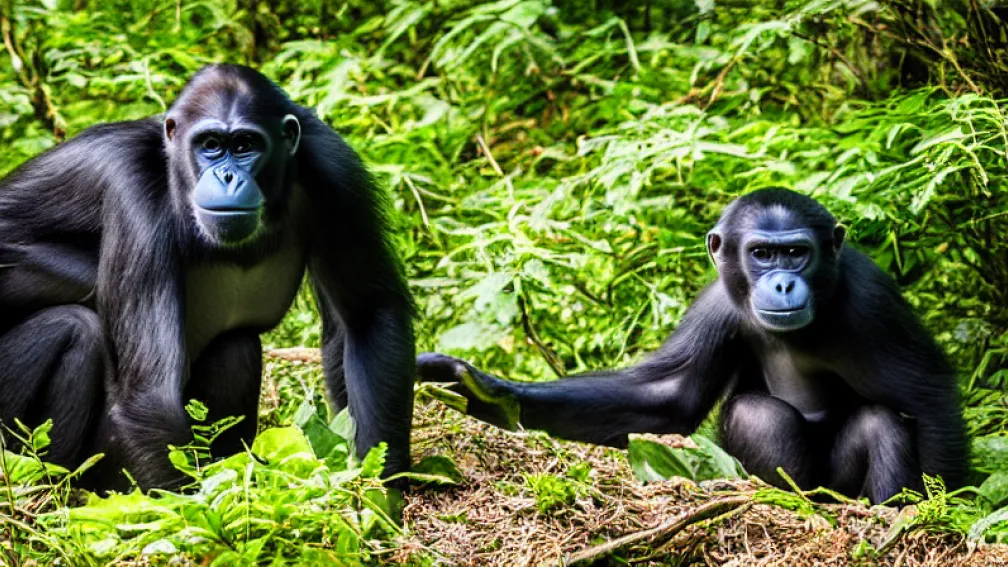
În câteva cuvinte
Kanzi, bonobo-ul celebru pentru capacitatea sa de a comunica cu oamenii prin simboluri, a murit la 44 de ani, lăsând o moștenire valoroasă în cercetarea primatelor și a limbajului. Decesul său subliniază importanța conservării bonobo-ilor și a habitatului lor natural din Republica Democratică Congo.
Deceases of Kanzi, the Famous Bonobo
Kanzi, the renowned bonobo known for his ability to communicate with humans through symbols, passed away on Tuesday at the age of 44. The announcement was made by the Ape Initiative, an Iowa (USA) research center where he resided since 2004.
Raised in captivity, Kanzi was the subject of numerous studies aimed at understanding the cognitive abilities of primates. The center mentioned that they await the results of the necropsy and will provide further details. Kanzi suffered from a heart condition and was constantly monitored.
Over three decades, Kanzi captivated scientists and the general public with his natural ability to understand English. This feat was observed during experiments conducted by his adoptive mother, Matata, at the Emory National Primate Research Center in Atlanta.
Unlike Matata, who showed no interest in learning with humans, Kanzi surprised researchers with his ability to quickly understand lexigrams – a system used since the 1970s, in which primates press buttons and point to images to communicate, similar to how children learn language.
Miquel Llorente, a primatology professor at the University of Girona, emphasized that while Kanzi was not the first primate to communicate with humans through symbols (Koko the gorilla and Washoe the chimpanzee knew sign language), his story is unique.
He added that his learning was spontaneous, without active training. Kanzi could use symbols to express his desires and needs.
Kanzi's existence was crucial for scientific research aimed at the origin of human language and the evolution of linguistic abilities.
Jill Pruetz, a primatologist at Texas State University, shared touching memories about Kanzi on Facebook.
Kanzi also learned to create stone tools and even invented his own technique.
Archaeologists Nicholas Toth and Kathy Schick taught Kanzi and his sister, Panbanisha, how to make such tools in 1990.
Kanzi was one of approximately 90 bonobos in the United States, with only seven zoos having specimens of this species.
The primate's life will remain a testament to the special bond we can form with other species and the surprising capabilities that science can still discover in the animal world.
The Ape Initiative is working on a documentary about the life of bonobos in collaboration with Wildstar Films.
Kanzi means "treasure" in Swahili, spoken in the Democratic Republic of Congo, the only place where bonobos live freely.
However, the war, which has resulted in over six million deaths since 1998, has left deep wounds in the country, making conservation efforts for the endangered species challenging.
Researchers such as Gottfried Hohmann and Barbara Fruth, from the Max Planck Institute for Evolutionary Anthropology (Germany), have dedicated themselves to studying these primates in their natural environment, but with interruptions.
Takayoshi Kano, from the Kyoto University Primate Research Institute (Japan), has also developed research campaigns.
There are only approximately 15,000 to 20,000 of these primates left in the dense, humid forests of Africa.
If bonobos do not survive in their natural environment in Congo, they will not survive in any other territory.
"It is an active conflict, and this impacts conservation, such as habitat destruction, meat consumption, and hunting. It is very worrying," emphasized Miquel Llorente.





